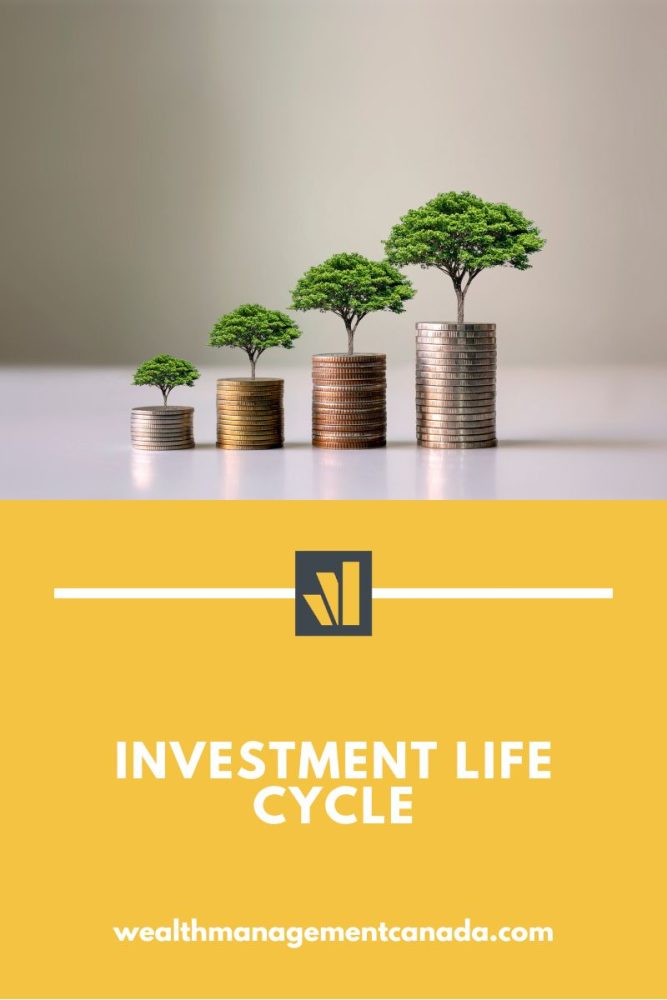People think of investment life cycles in two ways. First, there’s the planning-to-execution pathway in managing an investment. Then, there’s the financial life cycle you experience that dictates your financial goals at each stage of life. We’ll chat about both in this article. But before that, what do we mean by the investment life cycle? The 18-year-old version of you probably doesn’t have much in common with the 35-year-old version of you, right? That’s because you had different hobbies and priorities. You also had different financial goals and capabilities based on your income and life stage.
Speaking of life stages, how does your financial picture change in each one? We can gather insights on that via the investment life cycle, also known as the financial life cycle. Similarly, investment activity mimics its own life cycle. For instance, business owners plan, design, implement, and monitor the life cycle of an investment. However, this same process can be applied to anyone’s finances.

Table of contents
Our wealth managers are well-versed in managing financial portfolios at every stage of the investment life cycle. See for yourself. But in the meantime? We’ll give you the lowdown on the two investment life cycles at each of its phases and how you can use them to guide your financial goals.

START WORKING WITH A WEALTH MANAGER NOW
What is the Investment Life Cycle?
The investment life cycle (or financial life cycle) describes different life stages and corresponding financial goals and priorities for each one.
For example, someone in stage 1 wouldn’t be as concerned about building a retirement fund as they would be with paying off their credit card debt. Similarly, someone with a beefy savings account in stage 4 might not care to launch another business or build more wealth as they would with managing existing wealth.
Then, there’s the financial product investment life cycle. Think Shark Tank. Those investors know their stuff, and it isn’t by accident. It’s because they carefully consider and plan out every dollar spent before they invest and guide future action by stages of the investment life cycle.
Related Reading: Can Money Buy You Happiness?
What are the 4 phases of the investor life cycle?
Let’s dive into the nitty-gritty of each of the investment life cycle types and their phases below.
Life Stage Investment Life Cycle
This is more commonly known as the financial life cycle. Here are its four phases:
Stage 1: Accumulate wealth
Your first few years in the workforce put you in stage 1. These are the years when you’re trying to get your foot in the door with networking contacts and saving up for your next apartment or even for a property down payment. Maybe you’re planning a strategy to get that next salary increase or stability in your chosen career. You might even have a couple of basic assets, like a casual mutual fund, furniture for your apartment or a car. Of course, you can’t accumulate wealth while you’re in debt – that’s why paying down your credit card is vital during this time. You might have acquired other debt as well, such as student debt or a car loan.
Age: 20-30
Priorities:
- Build or improve credit
- Pay off high-interest debt
- Advance your career
- Put money into savings accounts regularly
Investment advice:
- Take advantage of compounding interest with early savings
- Set aside 10% to 15% of your income for savings
Stage 2: Grow and manage your wealth
You have a nest egg at this stage. Meaning? Your debts are either paid off or stable, and you have a hefty savings account that offers you financial comfort. With a higher income, you might invest more aggressively or have to budget for more expenses, like children or a mortgage. Investing more aggressively can look different for everyone. Some may choose to build up their investment portfolios whereas others may choose to build a business that will pay them well in the future.
Age: 30-45
Priorities:
- Invest money into retirement plans and other things that build wealth
- Find ways to grow your wealth more aggressively, even if it means more risk
- Save for mid-life goals, such as a career pivot or your children’s post-secondary education
Investment advice:
- Diversify your investments with items like ETFs, mutual funds, or real estate
- Align investments with your financial goals and risk tolerance
Stage 3: Preserve your wealth
Stage 3 is for late-career professionals with relatively stable, higher incomes and a bustling investment portfolio. At this point, most are comfortable with managing their finances and have figured out how to stabilize their wealth. Although, stage 3 isn’t quite retirement, but anyone in this stage should definitely chat with a wealth manager to make sure their investment strategy has enough juice to take them through retirement.

START WORKING WITH A WEALTH MANAGER NOW
Age: 45-60
Priorities:
- Preserving and maintaining wealth for retirement
Investment advice:
- Rebalance your portfolio to better suit your retirement needs
- Put the brakes on riskier investments.
- Embrace secure, passive investments
Stage 4: Distribute your wealth
You’re no longer in the workforce — or if you are, you might work reduced part-time hours or on a volunteer basis. Hopefully, these are your golden years, and you’re able to enjoy your time more with family and friends or accomplish personal goals and hobbies. A nice bonus? Your mortgage is paid off.
Still, your financial priorities don’t stop here. Yes, you’re enjoying the fruits of your investments and labour from the other three stages. But since you’re not working, it’s important to make your income and savings last. In addition, you’ll need to be more mindful of how you spend your money since income streams may reduce and savings won’t last forever. If you haven’t written a will, stage 4 of the life stage investment life cycle demands one, stat.
Age: 60+
Priorities:
- Maintaining a close budget to make less income last
- Ensuring your wealth is distributed amongst future beneficiaries the way you want it to be
Investment advice:
- Create a will if you haven’t already
- Consult a wealth manager on wealth distribution and tax-saving issues
- Dot the i’s and cross the t’s of your trust fund, if you have one
This cycle seems to follow a sequence of planning, execution, maintenance, and distribution. We see something similar in the investment life cycle, as we’ll discuss below.
Related Reading: Benner Cycle: Predicting the Future
Investment Life Cycle
Imagine you’re a multi-business owner and you’ve already scored a few investor contributions. By now, you’d know there’s a cycle involved for each one. This applies whether you’re a business owner finding funds for your new project; or a government organization garnering stakeholder contribution for a new initiative. At the end of the day, the logic is the same!
Here are the four phases of the investment life cycle:
Stage 1: Plan strategically
The FAO describes this stage as guiding the “analytical, planning, and coordination” work to inform an investment. Think of it like research. You want to narrow down on investment goals and priorities, stakeholder effects, and contexts that might affect costs and options.
Planning an investment entails:
- Industry or policy analysis
- Expenditure reviews
- Investment plans
- Project identification
Stage 2: Design
This is essentially the prep work for your investment project. You’re all done the research and analysis, but now it’s time to talk specs like:
- Objectives
- Risks
- Steps and activities
- Cost estimates
- Responsibilities/investors
Stage 3: Implement and monitor
By now, you already have the funds needed to bring your investment idea to life. This is where all the action happens in the physical investment cycle. Now, you’re planning what’s needed to gather insights on your investment.
You might have a reporting or communications strategy in place for investors — a concept much more comprehensive if you’re an organization investing versus a small business owner or independent entity.
Once you’ve launched your investment, you might monitor things like:
- Growth milestones
- Timelines
- Risks and safeguard issues
- Performance for all parties involved
Stage 4: Evaluate and capitalize
Now, you’ll evaluate all the insights you gathered to identify one piece of knowledge: did the investment meet your financial goals and expectations? If not, you’ll try to see what you could have done differently in terms of timing, the exact type of investment, or the type of product. You might consult with project managers, investors, partners, or wealth managers in this process to guide your next investment. The idea is to reflect on the entire process, learn from any shortcomings, acknowledge any wins, and implement them into your next endeavor.
Related Reading: How does life insurance work?
Using the Investment Life Cycle to Your Advantage
Entering a new life stage or stumped on your next investment steps? You don’t have to manage it all on your own. Even the most skilled and successful investors consult wealth managers to assess investment pathways suited to their lifestyle, goals, and financial situation. Book a call with a wealth manager today!
Read More: The Three Phases of Managing Cash Flows